Shannon V. OKeets
Posts: 22095
Joined: 5/19/2005
From: Honolulu, Hawaii
Status: offline

|
quote:
ORIGINAL: Easo79
If there can be "popular requests" about which part of the manual is going to be shown as sample, I would like (from my egoistic point of view  ) the explanation about USA entry in the war. I do not understand it from the rules: tension pool, entry pool, entry options, entry levels...I don`t get it.... ) the explanation about USA entry in the war. I do not understand it from the rules: tension pool, entry pool, entry options, entry levels...I don`t get it....
Here's a previously posted (over 2 years ago) section from the Players
Manual.
---
3.4.10 US Entry
The US Entry rules are quite diverse, with decisions made by all players affecting when the US enters the war. The participation of the US will make or break the Allied war effort, not just by how early or late it enters the war, but also by which US Entry Options are chosen and which US Entry Actions are played. These choices alter the range of possibilities for how much assistance the Allies can expect from the Americans.
This section contains advice on US entry strategies that can help prevent catastrophic mistakes (such as never having the ability to declare war on the Axis), as well as ideas that can help you develop your own strategies, whether playing as the United States, its allies, or its enemies. Although focusing primarily on the Global War scenario, the concepts herein can be used for many of the other scenarios too. The difference is that later scenarios start with a fixed number of entry markers assigned to each entry pool, and some options and actions already taken.
3.4.10.1 US Entry Marker Allocation
Over the course of a turn, several US Entry Actions may result in a marker being added to or removed from one of the entry pools: Germany/Italy or Japanese. When this happens, the marker is always added to or removed from the pool associated with a specific major power (usually the one that triggered the action). However, at the start of each scenario, and at the end of each turn, the US player must choose which pool, and those decisions are fundamental to the American war strategy.
During the first few turns of the game, you will want to make sure that both entry pools have at least two or three markers. If you have no markers in a pool when you are required by the rules to remove one, you can never declare war on that major power!
Initial Entry Marker Allocation
At the start of the Global War scenario, the US player has three entry markers to distribute between the entry pools (in all other scenarios the US takes part in, entry marker distribution is either fixed or the US is in the war). It is customary to allocate 2 or 3 of these to the Germany/Italy (Ge/It) entry pool, because of the high Allied activity in Europe early in the war. Germany must declare war on Poland to open the game, and the Commonwealth and France must follow by declaring war on Germany. Typically, these actions will cancel out each other's marker draws. What tips the balance is that, barring misfortune or poor play on the part of the German player, the USSR is usually obliged to occupy East Poland on the first turn as well, which results in a marker loss from the Germany/Italy pool 70% of the time.
Other common entry-related activities in the Germany/Italy theatre on the first turn of the game are:
• German invasion of Denmark,
• Axis aggression in the Balkans,
• Italian declaration of war (DOW) against the Commonwealth and/or France (or vice-versa),
• USSR occupation of the Baltic states,
• USSR land claims vs. Rumania and/or Finland (although if Germany accepts a claim, then there is no US entry effect),
• Allied aggression in the Middle East, and
• Axis aggression in the Low Countries - the Netherlands and Belgium - in the case of very aggressive Axis play or prolonged good weather.
Since the marker losses for aggressive Allied (especially USSR) behavior are more significant than marker gains for aggressive Axis behavior, having more markers allocated to the Germany/Italy entry pool means that the US can cope with the higher activity in that theater during the early turns of the game.
By contrast, unless the Allies have planned to be aggressive against Japan early in the war, all the entry actions affecting the Japanese (Ja) entry pool are aggressive actions by Japan. Furthermore, that activity in the early game is relatively slow-paced. An initial allotment of 0 or 1 markers in the Japanese entry pool means the US will usually have 1 or 2 markers there by the time the first US entry phase rolls around.
US Entry Phase Marker Allocation
Markers generated by other powers' US entry actions are allocated at the time they take place and must be allocated to a specified entry pool. Conversely, during US Entry phase at the end of each turn, the US player draws one or more markers and usually is able to allocate them to whichever pool he prefers. There are exceptions though. For example, once Japan declares war on the Commonwealth, one extra marker per turn is automatically drawn and allocated to the Japan entry pool.
When you have discretion to choose the pool to which a marker is allocated, you’ll want to bolster either the pool: (a) with fewer markers or with a lower entry total, or (b) in support of a key option you wish to pass. For example, Option 30 (Lend-Lease to USSR) or Option 36 (Commonwealth reinforces Pacific) may be your goal. The former may use a marker from the Germany/Italy pool while the latter may use one from the Japanese pool.
3.4.10.2 US Entry Options
Each of the US Entry Options is tailored to do one of two things: either to hurt the enemy position or to improve your own position (or that of your allies). Additionally, each option has a fixed chance of increasing the tension level versus its associated Axis major power. This means that you must understand both the benefits of each option, and the relationship between the Entry Level and the Tension Level. The latter determines the US chances for a successful Declaration of War, and may require quite a balancing act.
The rules define a key sequence of events which you have to understand fully for the rest of this section to make any sense:
1. The US player chooses a US entry option against either the Germany/Italy or Japanese pool. To do so, there must be a sufficient entry level in the pool (or pools) to meet the requirements for the chosen option, and any other prerequisites must be satisfied.
2. A die is rolled to see if “tension is generated”.
3. If the die roll generates tension, a marker is moved from the entry pool to the tension pool. This increases the tension level and simultaneously decreases the entry pool level.
4. If the die roll does not generate tension, then a second entry option can be chosen from the same pool.
The only way to increase tension is by choosing US entry options!
Managing Tension
Looking at the It's War Chart (figure 3-4-10-2), you can see the relationship between Entry Level (across the top) and Tension Level (on the left). If your entry level versus a major power is less than 25, or if your tension level is less than 5, you can't declare war. By cross referencing the entry level and the tension level versus a major power, you find the war number. You have to roll this number or less in order to declare war. All of the modifiers listed at the bottom of the chart are applied to the die roll, not the war number. The best time to DOW is when the entry level is 61+ and the tension is 41-50. Then it is guaranteed to succeed.
As you can see from the chart, having too much tension can actually reduce your chances of being successful when you declare war. But that is not usually a problem; just be aware of the possibility.
When to Play US Entry Options - in General
Early in the game choose entry options with the intent of generating tension, until you have enough tension to meet the requirements for Gear Up Production and Pass War Appropriations. Given the opportunity to pick any of several options, you will usually want to pick the one with the highest chance of generating tension. Once you have the tension level high enough to pick the option you are currently working on, focus on building up the entry levels until you can choose it. During the latter stage, try to choose options with a low risk of generating tension, or don’t choose any options at all. To restate this point: first choose options that are likely to generate tension, then choose options that aren’t.
If you pick an option against a particular major power group (Germany/Italy or Japan) and do not generate tension, you can pick a second option against that major power group. It is useful, knowing this, to identify in advance two options you’ll be eligible to pick. Then, when the US entry phase comes around, pick the higher-entry option first (the higher entry level requirement, not the higher risk of generating tension). This ensures that if you do generate tension (thereby reducing the entry level of the pool), you will still be able to select the lower-entry option in a subsequent turn.
When selecting US Entry Options, the trick is to judiciously choose a few critical options to play as early as possible (e.g. 9, 15, 16, 19, 22, and 26; see RAC 13.3.2). Even then, these should be chosen in 1940 when the average marker values are lower. All other anti-Japanese options should only be chosen when your fleet is in Pearl Harbor. That will allow you to manipulate US entry to either ratchet up the tension or let it seep away as required. This is also a good time to choose options 13 and 23, to start putting pressure on the Japanese player.
From then on, tailor the options you choose to the game’s circumstances. Except for the above options, choose fewer rather than more options, to maximize your flexibility later in the game. Once an option is chosen, it can never be chosen again and too little tension can be a bigger problem than having too much, so stay alert and keep your tension levels synchronized with your entry levels.
Recommended US Entry Option Choices
All of the US Entry Options have a purpose in the game. Depending on the current conditions, almost any option can feel like the most important one to pick next. Early in the game though, there are several that you should be aware of, either because they should be picked early, or because they should be set as goals to reach as soon as the need arises. These combine with situation-specific entry options to guide your choices throughout the game, with the final goal of entering the war before it's too late to do any good.
Option 7: Occupy Greenland & Iceland (Ge/It) (9)
Convoys need to be protected. You can use your navy to do this job, but the best protection is provided by having land-based aircraft nearby to back up your fleet when the enemy begins hunting you. The US begins the game with more available resources and oil than any other major power. Most experienced players try to send of much as they can (within the rules) to overseas allies who are already active. Early on, the North Atlantic sea area can be used as part of your convoy route from the United States to Europe, because the Axis can't easily attack that far from home, and your escort fleet can probably handle whatever they send out. By the mid-game however, the Axis usually is in a much better position to threaten your convoy pipelines.
Choosing to occupy Greenland and Iceland allows you to use the longer northern route through the Canadian Coast and Denmark Strait, and to offer air cover along the entire route using this territory as a base for your bombers. You don't need to select this option real early; only when Germany starts to consistently put 2 to 3 build points per turn into submarines do you need to begin worrying about selecting this option.
Option 13: Embargo on strategic materials (Ja) (5),
Option 23: Freeze Japanese assets (Ja) (7), and
Option 31: Oil Embargo (Ja) (9)
These three US Entry Options act as economic sanctions against Japan. The first two reduce the resources you need to send to Japan each turn by 1 each, and the Oil Embargo eliminates the need to send any resources to Japan. Additionally, once Oil Embargo is chosen, the Netherlands East Indies oil resources stop being shipped to the Japanese. Something to keep in mind with these three, is that they must be chosen in order, and that as soon as you choose the first one, Embargo on strategic materials, you no longer get the build point that Japan is required to send from the start of the game. A good strategy is to wait until you are sure you can choose these options on consecutive turns before selecting the first one. This reduces the overall impact on US production and squeezes the Japanese economy all at once, leaving little time to recover from the sudden resource shortage.
Option 26: Relocate fleet to Pearl Harbor (Ja) (6)
One of the most interesting entry options is Option 26. Not only does this allow you to base naval combat units in Pearl Harbour, but as long as your fleet based there meets the requirements outlined in RAC 13.3 you can adjust the probability of generating tension when picking US entry options which are Japan-specific. Given the typically lower tension probabilities of the Japan specific options, it is not unheard of for US players to build up entry to relocate the fleet before picking many Japan specific options, although it is hardly obligatory given the discretion the US has in choosing tension when picking generic options. If your fleet is not at Pearl Harbor, you also suffer a +2 die roll modifier when attempting a Declaration of War.
Option 22: Gear up Production (All) (9) and
Option 34: Pass War Appropriations Bill (All) (13)
As a general rule, the two most important US entry options are Option 22 (Gear up Production) and Option 34 (Pass War Appropriations Bill), which improve US production. As you will recall, both options are generic options, meaning you must have entry totals for both the Europe and the Japan pools equal to the entry option number, and tension totals in both pools equal to one-half the entry option number.
Given how entry and tension are calculated in each pool (see RAC 9.4), the simplest means of meeting the requirements for Option 22 is to have markers whose individual values sum up to 11 in each entry pool and 5.5 in each tension pool. Since markers have whole number values only, this typically means a split of 5 to 6 in marker values. Likewise, the simplest means of meeting the requirements for Option 34 is to have markers whose individual values sum up to 17 in each entry pool and 8.5 in each tension pool (a split of 8 to 9 in marker values). You must also, of course, have chosen Option 22 in a previous turn.
3.4.10.3 US Entry Actions
For every action, there is an equal and opposite reaction. That's not entirely true for MWiF, but it isn't entirely false either. US Entry Actions, as discussed a above, can increase or decrease US Entry Levels. For every aggressive action made by an Axis player, there is an associated risk of adding a marker to one of the entry pools. For every aggressive action made by an Allied player, there is an associated risk of removing a marker from one of the entry pools. Since the entry and tension levels determine the chance of a successful US declaration of war, the risks need to be weighed before taking any action that can alter those chances.
The 'Saddle' Shape of Entry Marker Distribution
The distribution of the entry markers has a curious saddle shape (see section 10.5, 13.2 Entry markers). The absolute average value of the markers is 2.33 in 1939, dropping to 1.79 in 1940, and increasing to 2.60 in 1941. This means that all US Entry Options and US Entry Actions have an exaggerated effect in 1939. Hopefully, this will limit Nazi aggression. Unfortunately, it is likely to have the same effect on the Allies. In 1940, the Axis is more likely to engage in much more aggressive tactics, since the probabilities favor lower marker values being added to the entry pools.
MWiF does not use a finite pool from which markers are randomly drawn. This means that every time a marker is drawn, it has exactly the same potential value as any previous marker draws. It also means that drawing several markers in a row, each with a value of '4', does not alter the average value of the markers that 'remain' in the pool of available entry markers. That pool is best thought of as a set of probabilities; until a marker is drawn it does not actually exist, and so the pool is never reduced in size.
Playing as the US
While only the US player is eligible to view the US entry and tension markers, other players may be able to estimate the entry and tension levels by paying attention to the information reported as US entry options are selected. The US player can also communicate real or deceptive signals about his or her entry values. If you can bluff the enemy into a premature declaration of war, through talk and good play, you can end up with production points that would never have been possible before.
Due to the 'saddle' shape of entry marker distribution, all actions taken in 1939 are magnified, while those taken in 1940 impact US Entry to a much lesser degree. Use this to form strategies with your allies. If you have 10 markers in the Ge/It Entry Pool, for example, but 7 of them have a value of 0 or 1, you can tell the USSR player that it's as safe a time as any for him to gather up the Persian oil fields. If you want, you can even tell him there's a 70% chance that it will have little to no effect on things, though that isn't really necessary. The idea is just to keep your allies informed, so they know when to hold back and when to press the attack.
Because the US player also controls China in MWiF, pay attention to the situation overseas. If China cannot be saved from defeat, it is often prudent to surrender unless Japan is at war with another allied major power. Don't let the Japanese sit there at the last factory, waiting for the real war to deliver the knock-out. You won't get the 3 or 4 markers or the extra marker per turn that you would get if China is conquered by Japan, but you won't get those anyway if Japan refuses to finish the job. What you do get is a 10% increase in your chance to declare war on all Axis powers. Also, Japan becomes a neutral major power again, limiting their Action choices to Combined or Pass actions. This practically forces Japan to declare war on somebody else whether they are in the position to do so or not. That immediately adds markers to the Japanese entry pool, and probably gives you an extra marker per turn, too.
Axis Players
The Axis should generally not allow US Entry considerations to affect their overall strategy or aggressive behavior too much. If the specter of the Americans entering into the war is too great a deterrent against Axis aggression, the Axis might find they have not expanded their economies and defensive perimeters enough, or that they haven't sufficiently weakened the other Allies early enough in the game. As a result, the Axis powers might find themselves in a much weaker position once the US does join the war than if they had aggressively pursued a better position - even if that brings the Americans into the war a few turns sooner. It also could create the opportunity for the Commonwealth, France, and the USSR to build up their forces.
However, the Axis cannot simply ignore US Entry. Just as delaying the US ability to Gear Up Production, Pass the War Appropriations Bill, or enter into the war imposes significant penalties on US production, unusual acceleration of these significantly increases the overall Allied production advantage. If the US enters the war too quickly, even if the Axis powers have made substantial gains up until that point, they may find themselves unable to consolidate their positions. The subsequent landslide of American military power then has the potential to crush the unprepared Axis defenses.
Assuming the US player does not provide any hints through communication with the enemy, the Axis players must estimate US entry and tension levels by keeping track of the US Entry Options that are chosen.
The game mechanics of MWiF are slightly different from WiF FE. Instead of showing specific entry markers every time an option is chosen or a war declaration is attempted, the other players are only informed of the die roll and whether it succeeded or not. When a DOW succeeds, the other players are told what the sum of the marker values are in all 4 pools. No other information is provided.
By paying attention to the US Entry Options that are chosen, you can respond to the threat each represents. The Japanese player, for example, must usually begin preparations for the wider Pacific War as soon as (or even before) the US player chooses Option 26 (Relocate Fleet to Pearl Harbor), and (particularly when playing with the optional rules for oil) must be ready to begin the Pacific War shortly after Option 36 (Oil Embargo) is chosen. All of the Axis players must be prepared to either declare war on the US, or to expect an attempted declaration of war made by the US once Option 34 (Pass War Appropriations Bill) is chosen. Timing of the declaration depends on the temperaments of the Axis players, and on the American player's tolerance of risk (namely, the risk of failing at an attempt to declare war).
Allied Players
In some respects, the Allies must take US entry into account to a greater extent than the Axis when planning overall strategy and specific acts of aggression. This is largely because the Allies want the Americans to enter the war sooner rather than later. Or, at the very least, they want as many lent resources and build points as the Americans can send (the more, the better). If the Allies act in an overly aggressive manner early on in the war, it can hinder the US ability to make these things happen by constantly draining markers from the US Entry pools.
When the Allies intend to engage in aggressive behavior, they and the US player should agree on when it will occur so the US player can be prepared for it. For example, if the Allies intend to engage in an anti-Japan campaign early on, perhaps even including a Soviet declaration of war on Japan, the American player would make an exception to the typical initial marker distribution. Instead of placing all three in the Ge/It pool, two might be placed in the Ja pool (although this, along with an Allied set-up intended to pursue an anti-Japan strategy, tends to telegraph the Allied intent).
The penalties for Allied aggression, which tend to be stiffer than those for similar Axis aggression, and the resulting delays in gearing up production and entrance into the war, mean that the Allies must be able to justify their aggressive acts beyond any reasonable doubt. A few examples:
• If the USSR wants to make a land claim, they should arrange it so that denying the claim is very unappealing to the German player.
• If the Allies want to knock over a minor country, such as Portugal or Persia, they must be sure it can be done swiftly and completely, before Axis intervention can gum up the works.
• If the Commonwealth player wants to declare war on Italy, in all likelihood delaying US entry, then the benefits of the surprise impulse and getting the jump on the Italians should outweigh by a substantial margin the risks of being surprised by an Italian declaration of war, which will probably hasten US entry into the war.
This is not to say that the Allies should never engage in aggressive behavior, for often there is much to be gained by it. However, too much aggression very early in the game, without considering the consequences to the overall war effort, can lead to disaster. In 1939, it is better to play on the timid side, at least until the entry pools are built up a bit, so that when you absolutely must do something aggressive, it won't prevent the Americans from ever entering the war. Once you have that safety net, do not let US Entry concerns lead to major mistakes. If a Commonwealth Declaration of War on Italy needs to happen, it needs to happen. In particular, if Italy declared war only on the French, and are getting the Germans involved to help in the Mediterranean while they are swallowing up all of the French colonies, then it is time to act.
_____________________________
Steve
Perfection is an elusive goal.
|
 Printable Version
Printable Version







 . Will it be released posthumously?
. Will it be released posthumously? 
 Actually I asked a couple of very experienced programmers whom I've known for over 30 years about this and they were both appalled at the idea.
Actually I asked a couple of very experienced programmers whom I've known for over 30 years about this and they were both appalled at the idea. 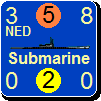
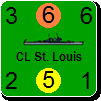


 )
)
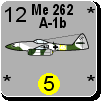
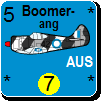

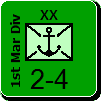

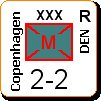



 New Messages
New Messages No New Messages
No New Messages Hot Topic w/ New Messages
Hot Topic w/ New Messages Hot Topic w/o New Messages
Hot Topic w/o New Messages Locked w/ New Messages
Locked w/ New Messages Locked w/o New Messages
Locked w/o New Messages Post New Thread
Post New Thread